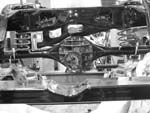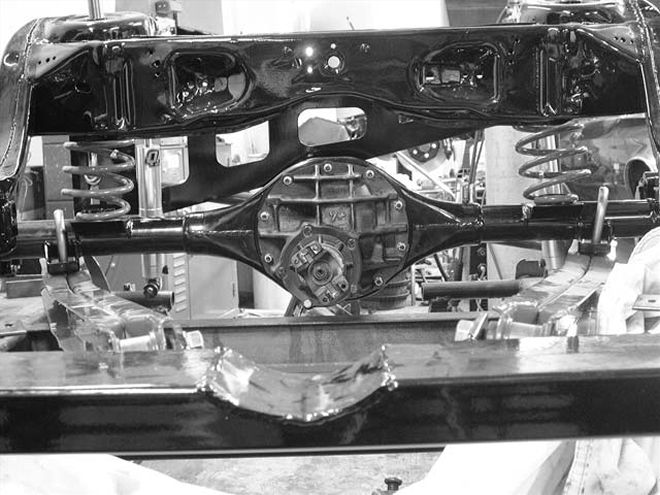

The decision to build a Ford 9-inch rearend is usually made for a number of good reasons, including the drop-in third member (making gear swaps a breeze); the huge aftermarket parts availability, including axles, brakes, and differentials; and the strength. When properly fortified, the 9-inch's inherent design strength makes it capable of handling the power of even the most brutal big-block. The Ford 9-inch rearend is the small-block Chevy of rearends in popularity, which made it a logical choice for our project Cheap Street Chevelle.
There is much confusion surrounding brake compatibility in the Ford 9-inch world and a plethora of variations were offered over the years on production rearends (see sidebar). Ford is famous for making inexplicable design changes, and the venerable 9-inch is no exception. When outfitting a car with a 9-inch differential, choosing the right brakes for the application is vital. This may seem obvious, but it's important because these minor variations can make later upgrades difficult or expensive.
Currie Enterprises has seized the opportunity to create an economical solution to the Ford 9-inch brake conundrum by promoting a universal standard based on readily available Ford Explorer disc brakes in order to make more choices available for brake upgrades. Currie has enlisted several aftermarket brake companies to join in the manufacture of "Currie standard" brakes. We decided that Explorer-style brakes would be the most logical route for our A-body buildup, so we dropped our 9-inch housing off at Currie Enterprises to have the new housing ends installed on one of the company's 9-Plus housings.
DimensionsTwo critical values determine which housing ends are attached to a 9-inch rear and must be matched to the correct axleshaft. The R value is the diameter of the register of the axle, and the X value is the distance between the housing end and the axle flange, which affects brake selection .While variations exist within the three major housing-end categories, the most common dimensions are as follows:Bolt patternR valueX valueLarge bearing2.{{{780}}}2.365Torino bearing2.7802.436Small bearing2.4302.525Currie/{{{Explorer}}}2.8002.500Brake Dancing
The most complicated aspect of using a Ford 9-inch rearend is the issue of brake compatibility. Many variations of the housing-end bolt pattern exist for the Ford 9-inch, but we will limit our focus here to three of the most common passenger-car versions: early large bearing, early small bearing, and Torino large bearing.
For years, the standard in the aftermarket was the early large-bearing housing-end bolt pattern, while Ford's most common "standard" was the Torino large-bearing bolt pattern. The small-bearing variety is also referred to as Mustang-style and is still fairly popular with vintage Mustang afficionados. Within each of these categories lie numerous undocumented variations. To further complicate matters, in one year (1979) three standards were used in the truck line of 9-inch rearends. Without understanding these variations and asking the right questions, a person could easily end up with a housing and axle combination that no brakes will work with, and according to Currie, this happens all too frequently.
Currie Enterprises took this bull by the horns and, in cooperation with several aftermarket brake manufacturers, set out to create a new industry standard based on the Ford Explorer housing-end dimensions. While similar to the Torino pattern, the new Currie standard dimensions are based on the very affordable and common Explorer rear disc brakes (see, SUVs are good for something). These dimensions open up many brake options for the enthusiast, including Explorer 10-inch drum brakes, 11-inch drum brakes (available exclusively from Currie), Explorer disc brakes, Wilwood's new disc brakes with an internal parking brake, and Baer's new "Pro-Touring" brake kits (offered in 11-, 12-, and 13-inch rotor kits).